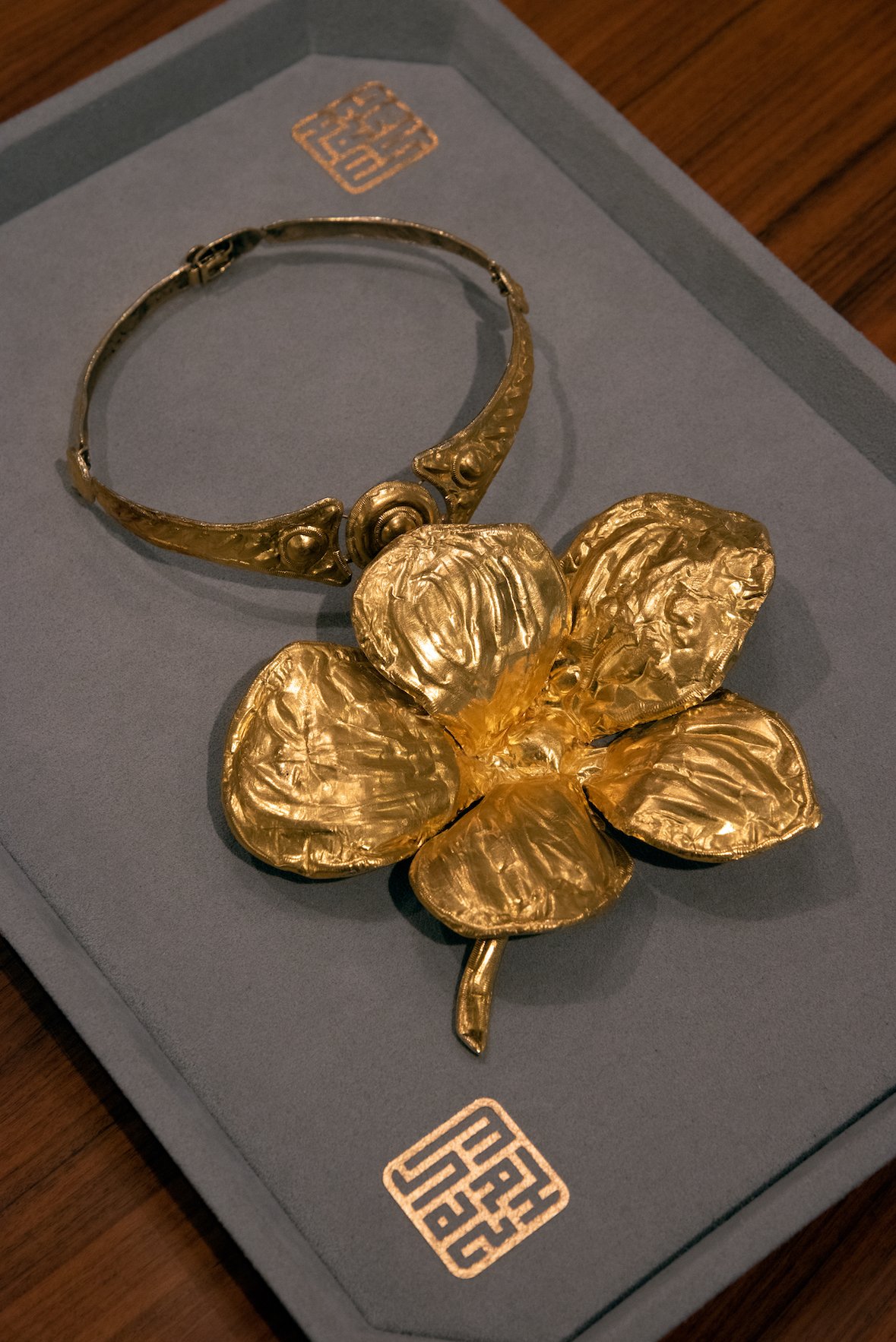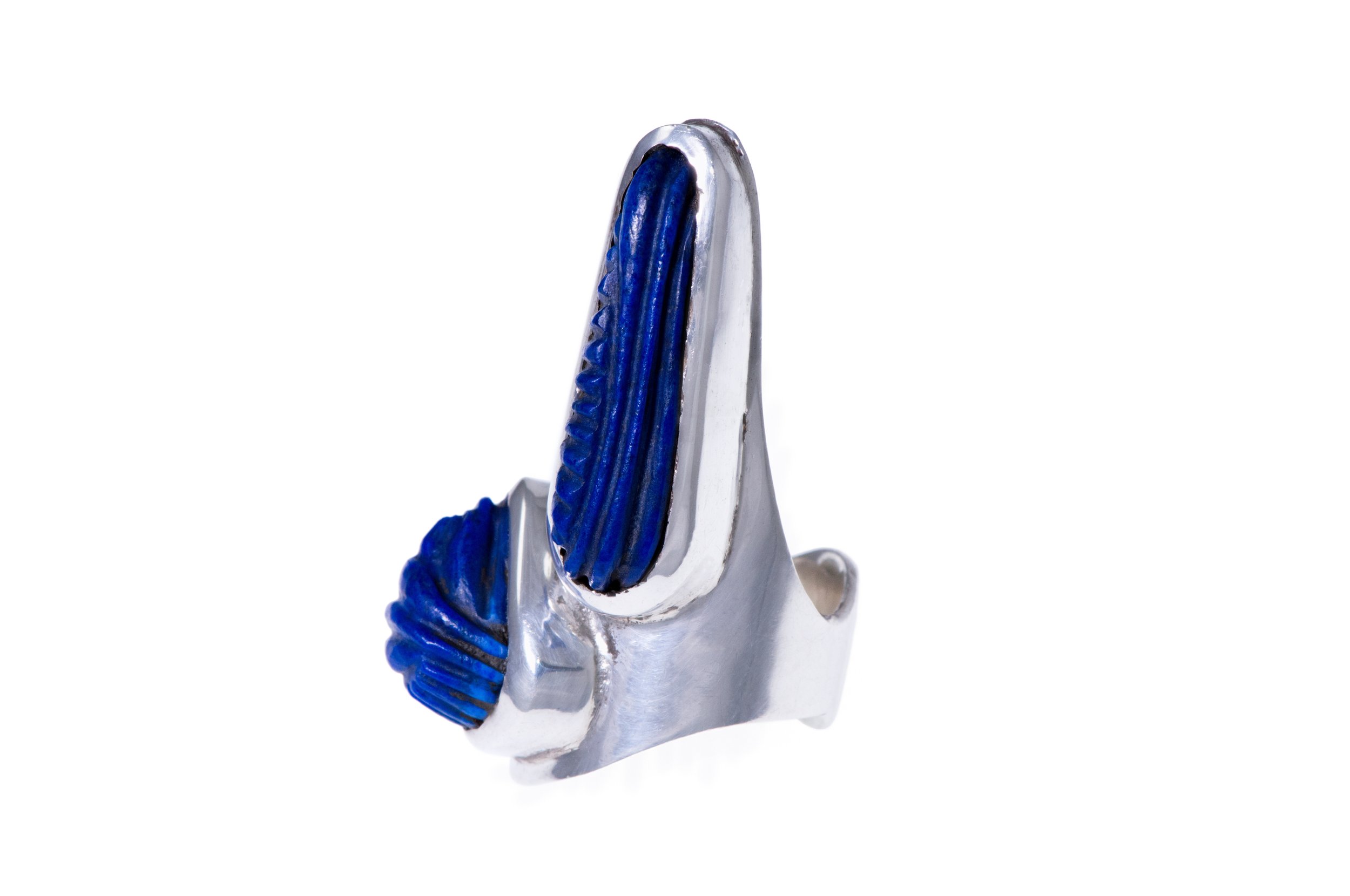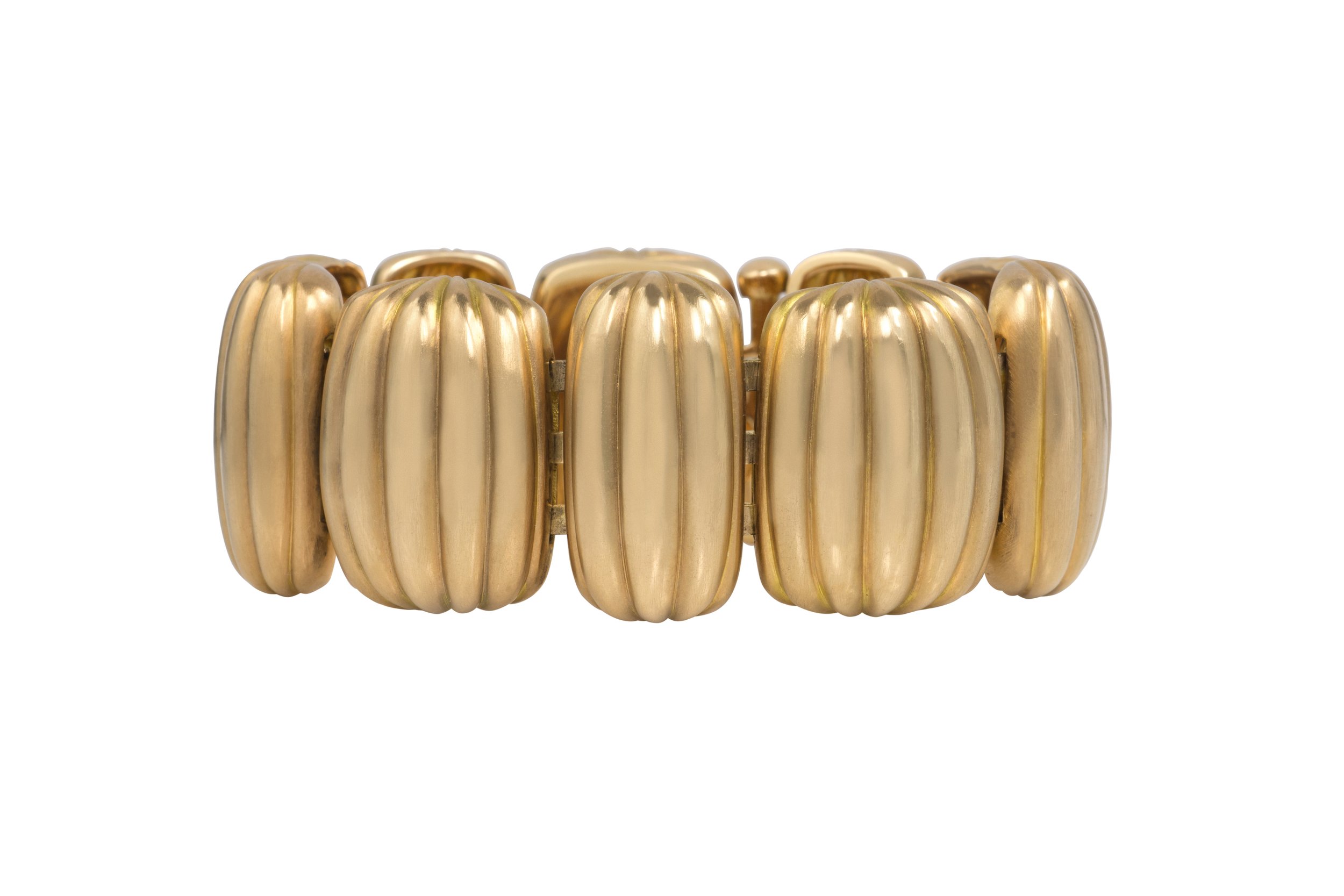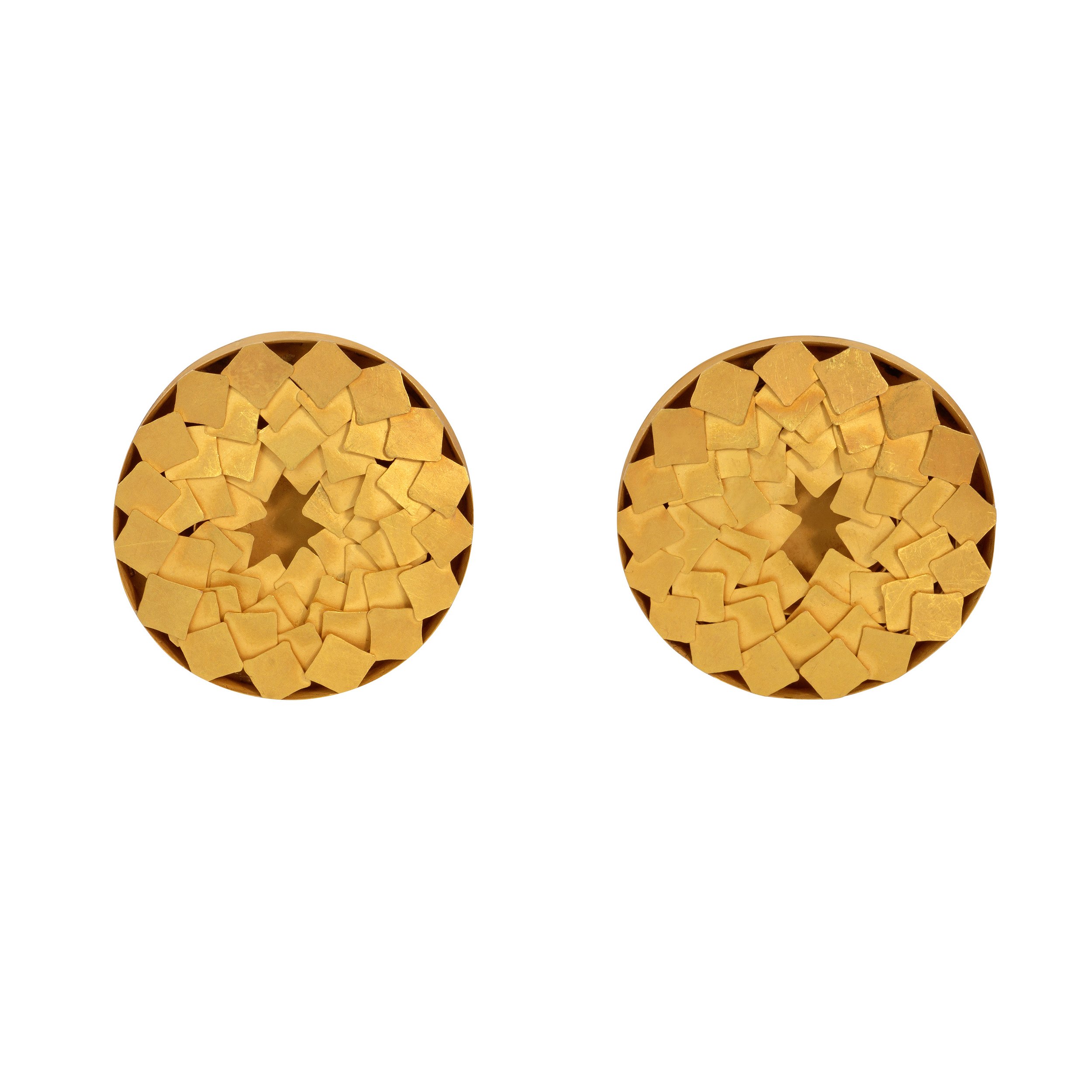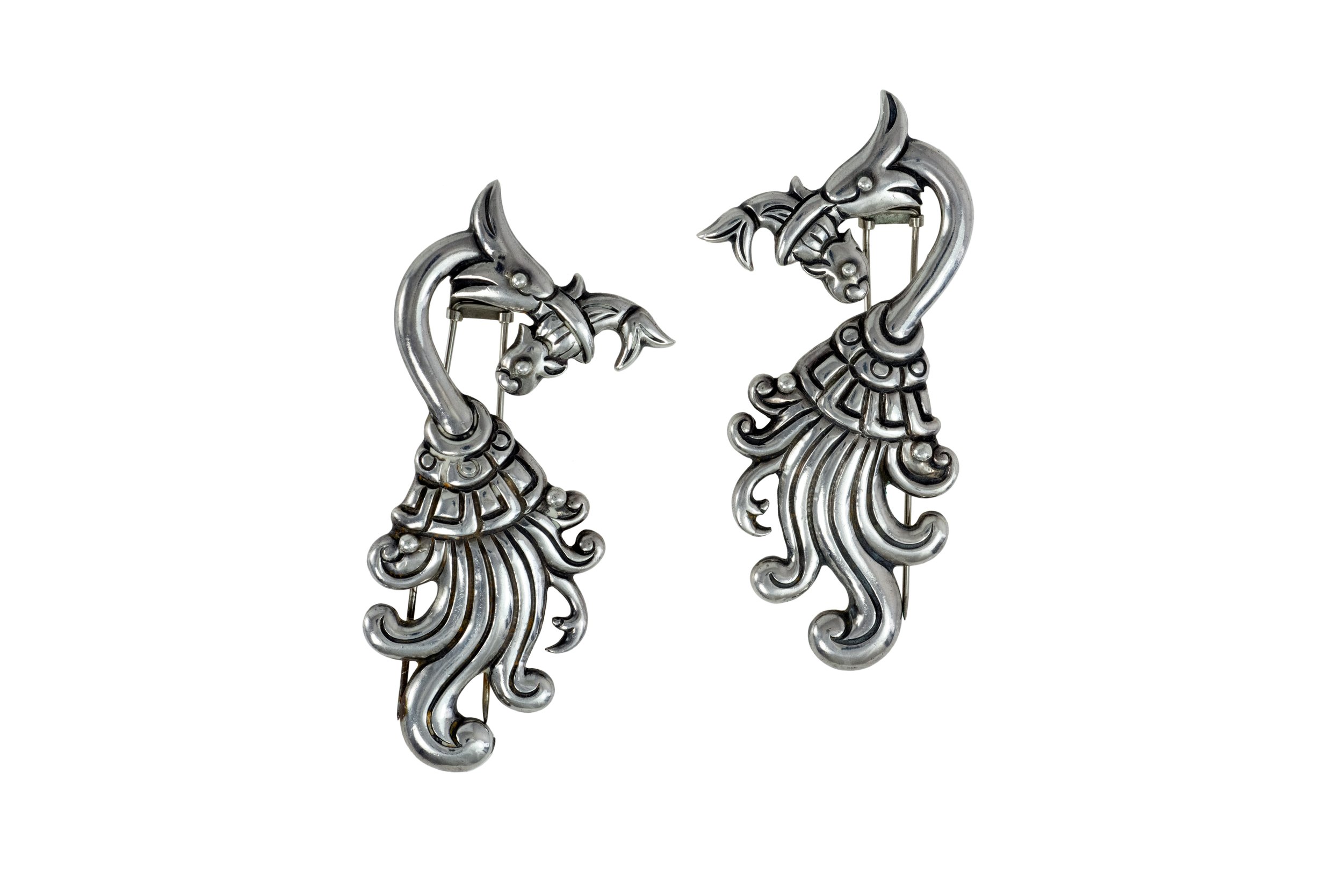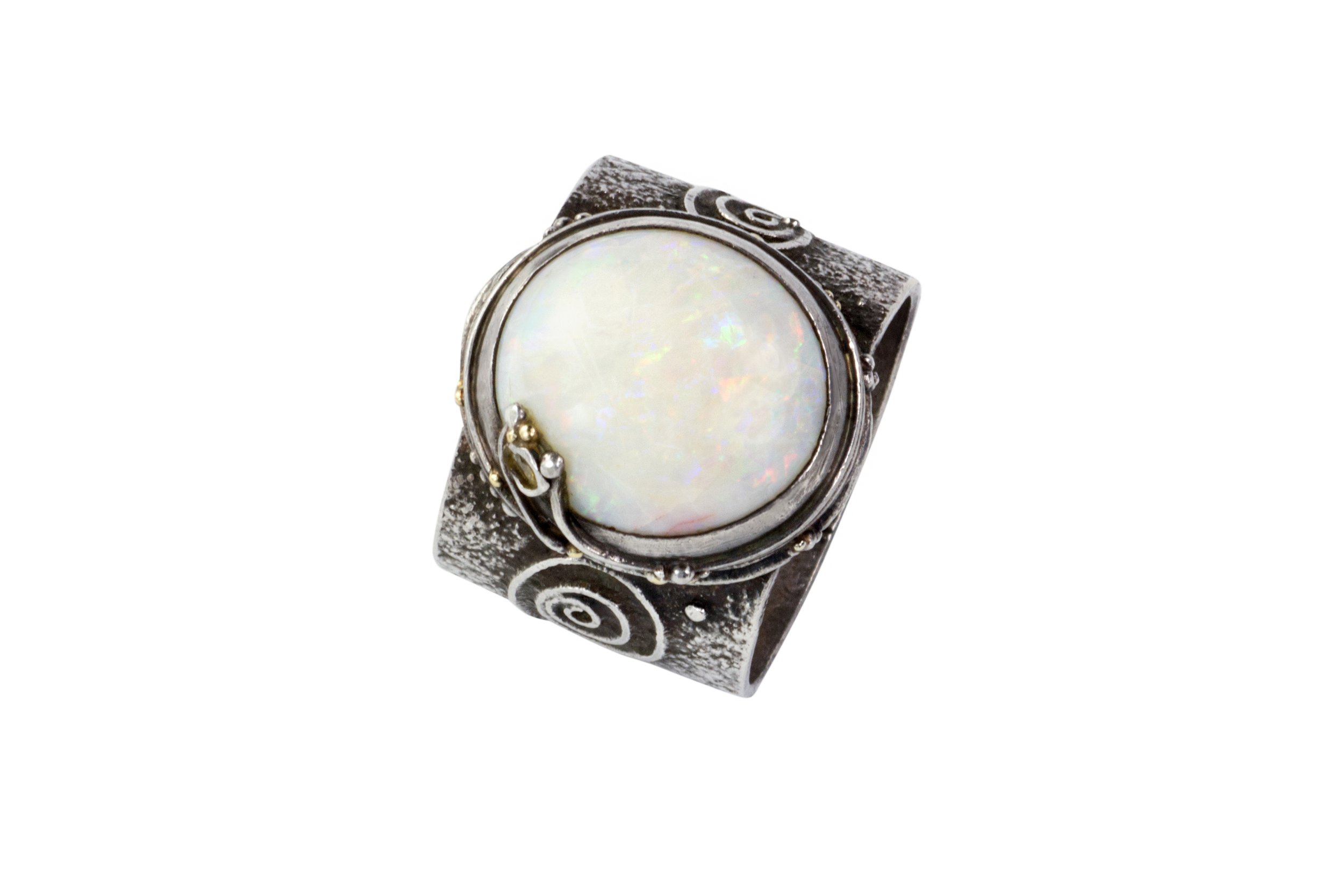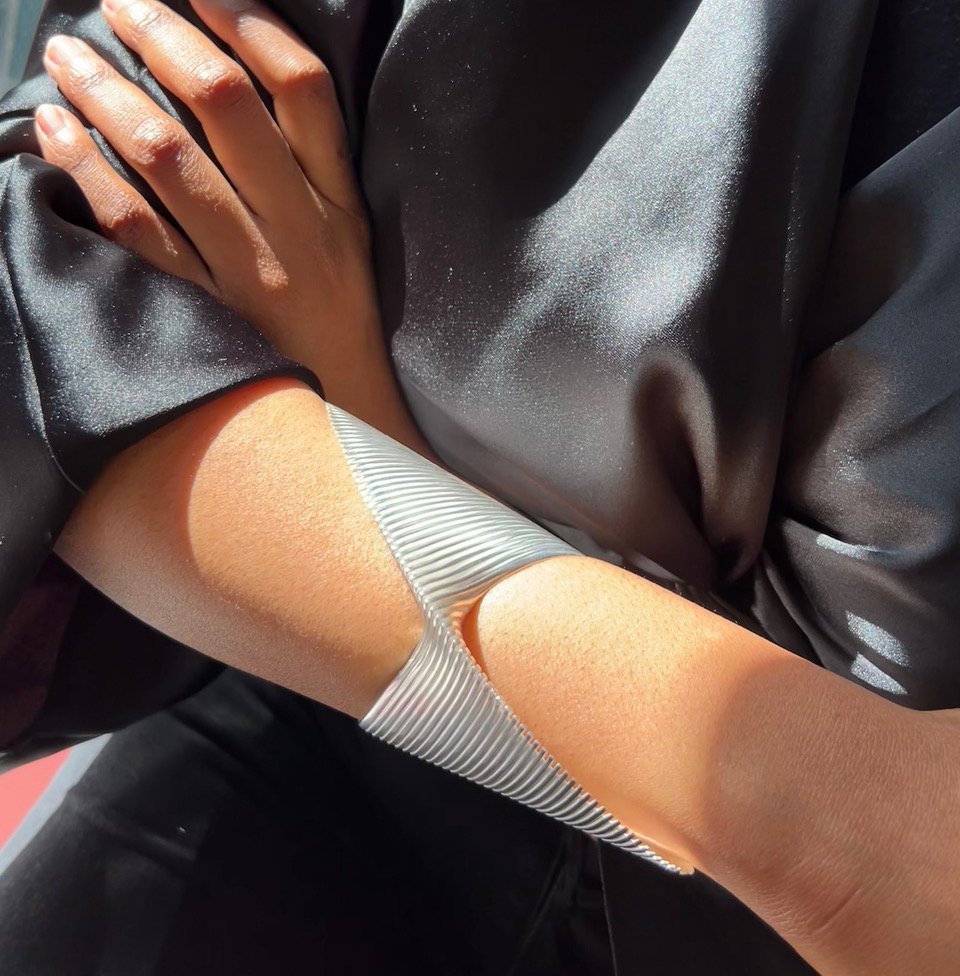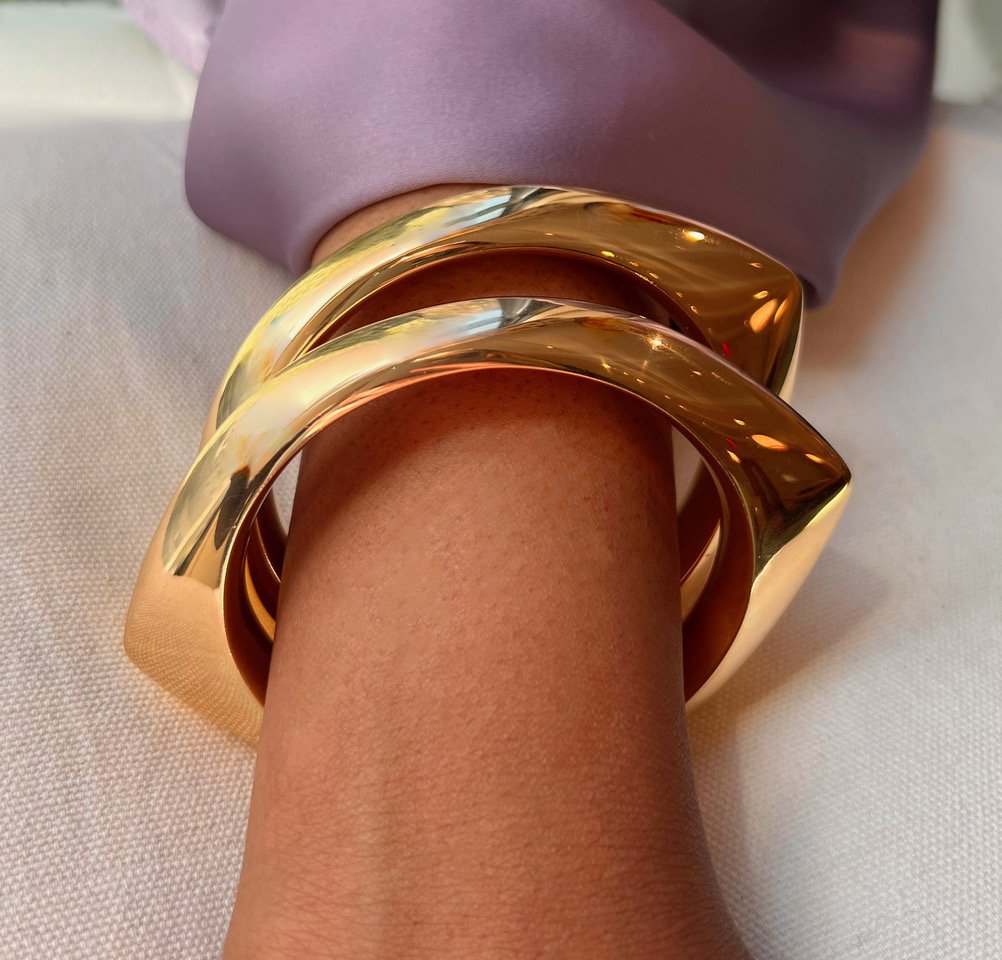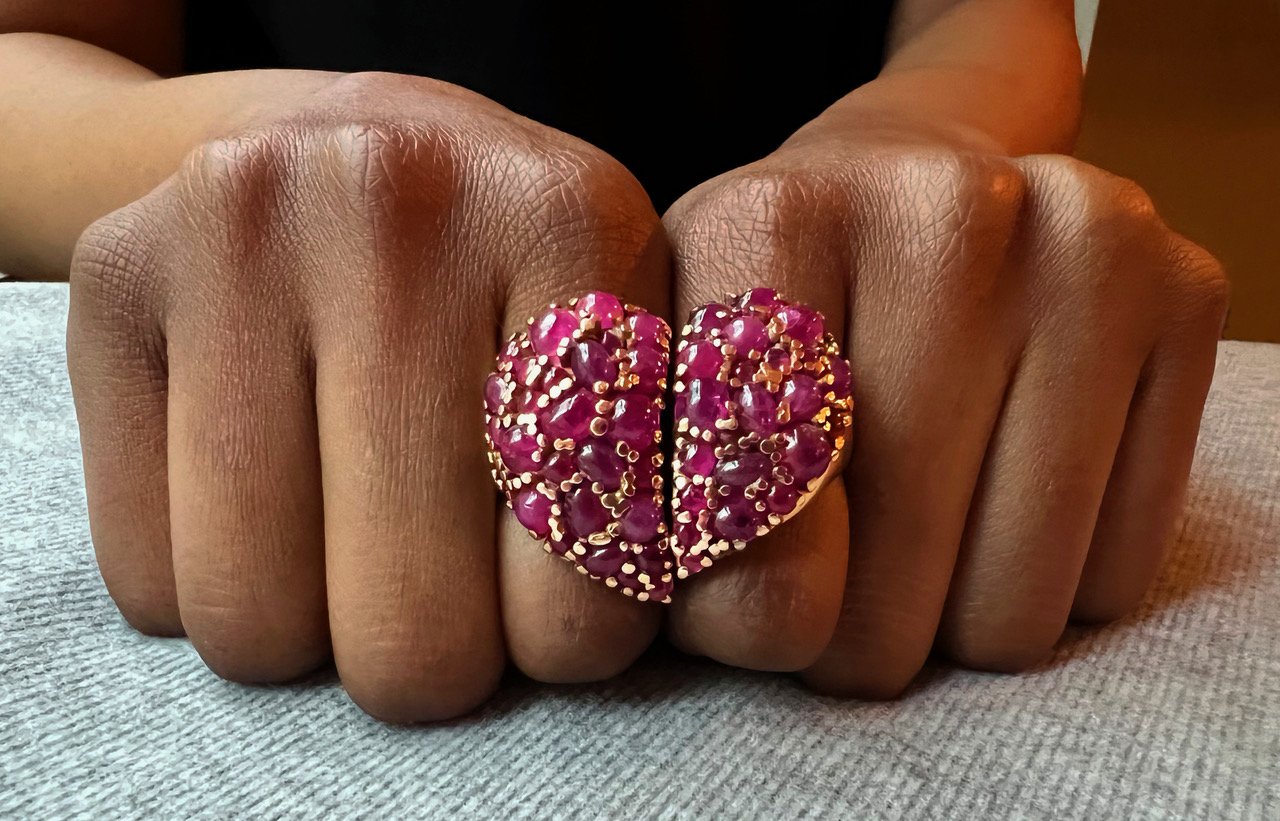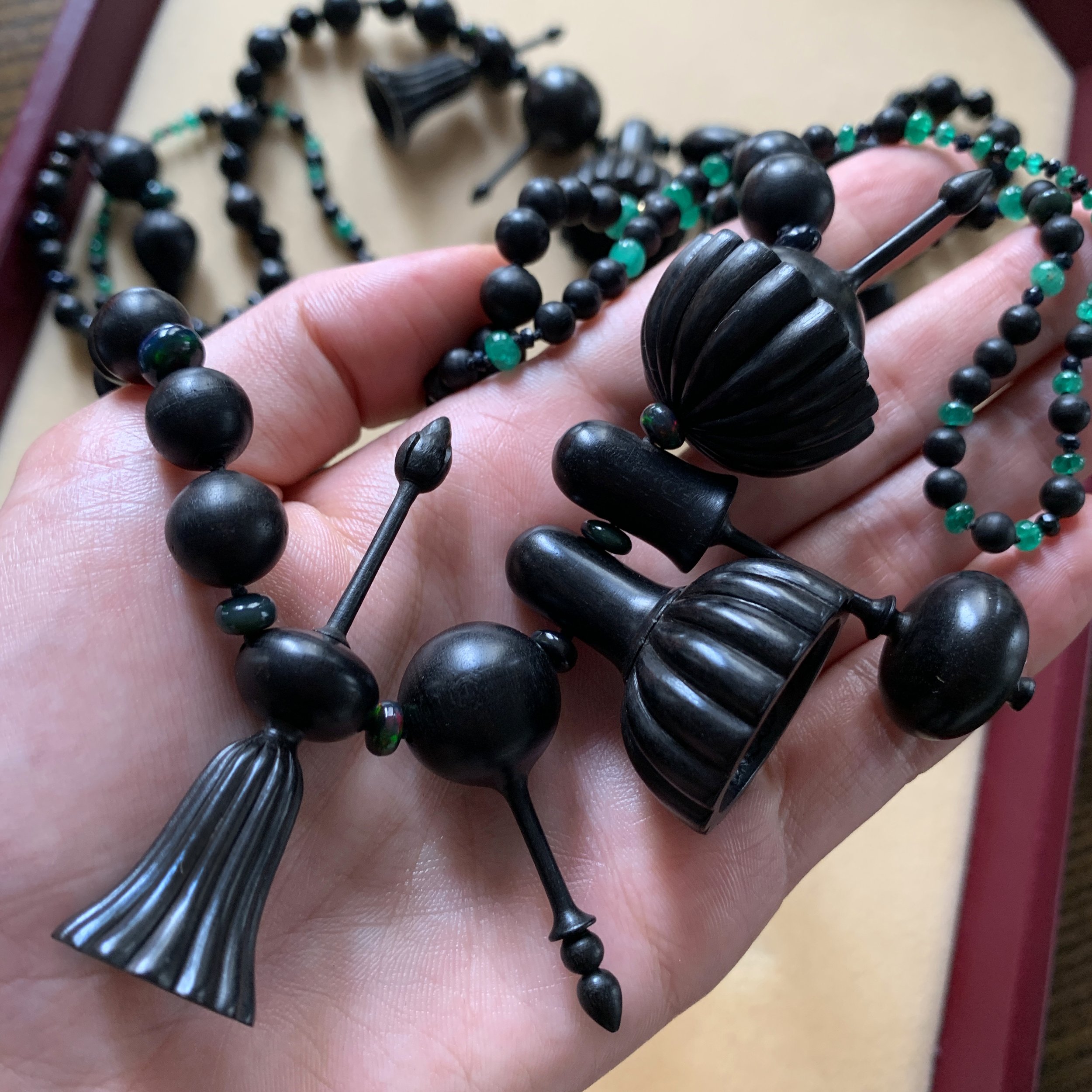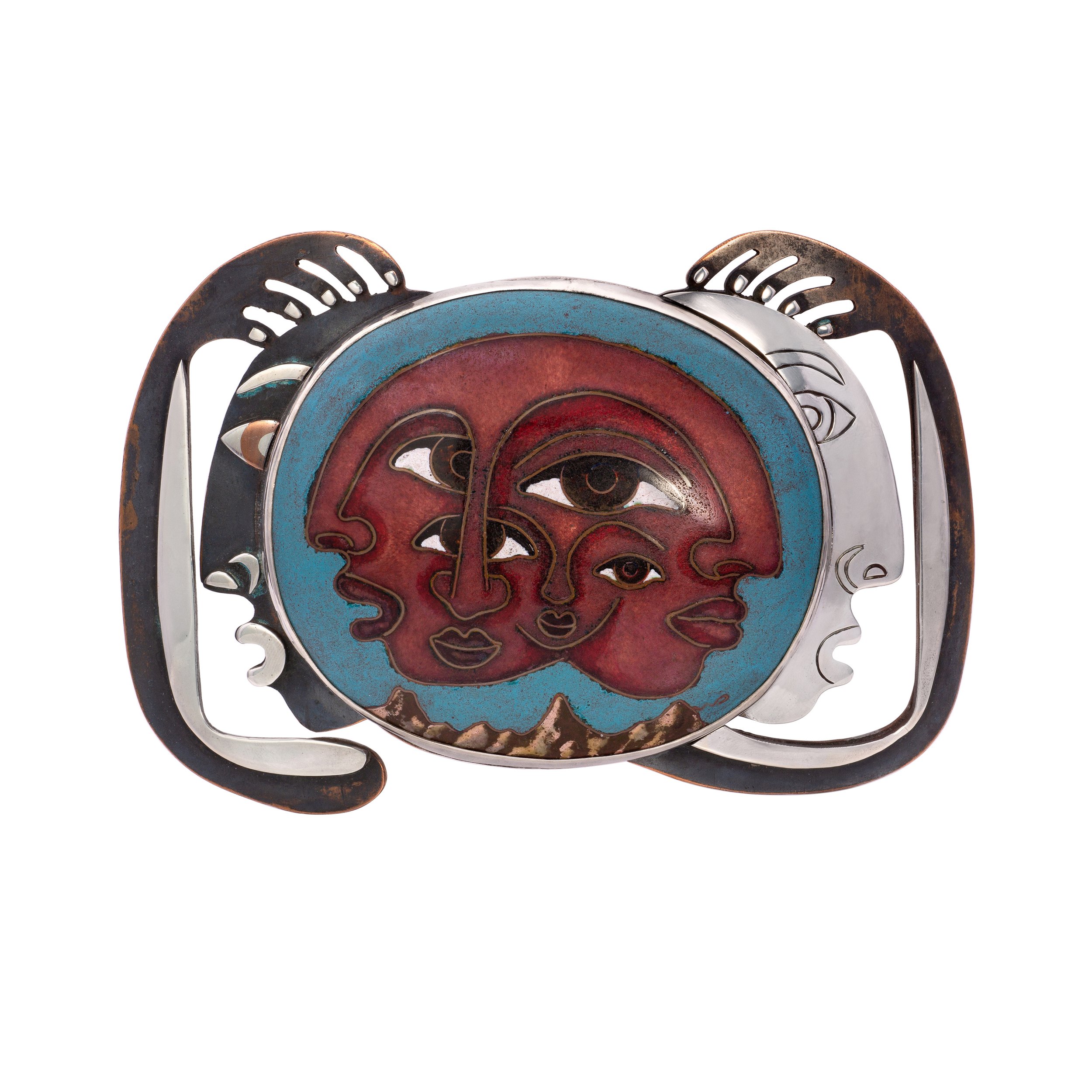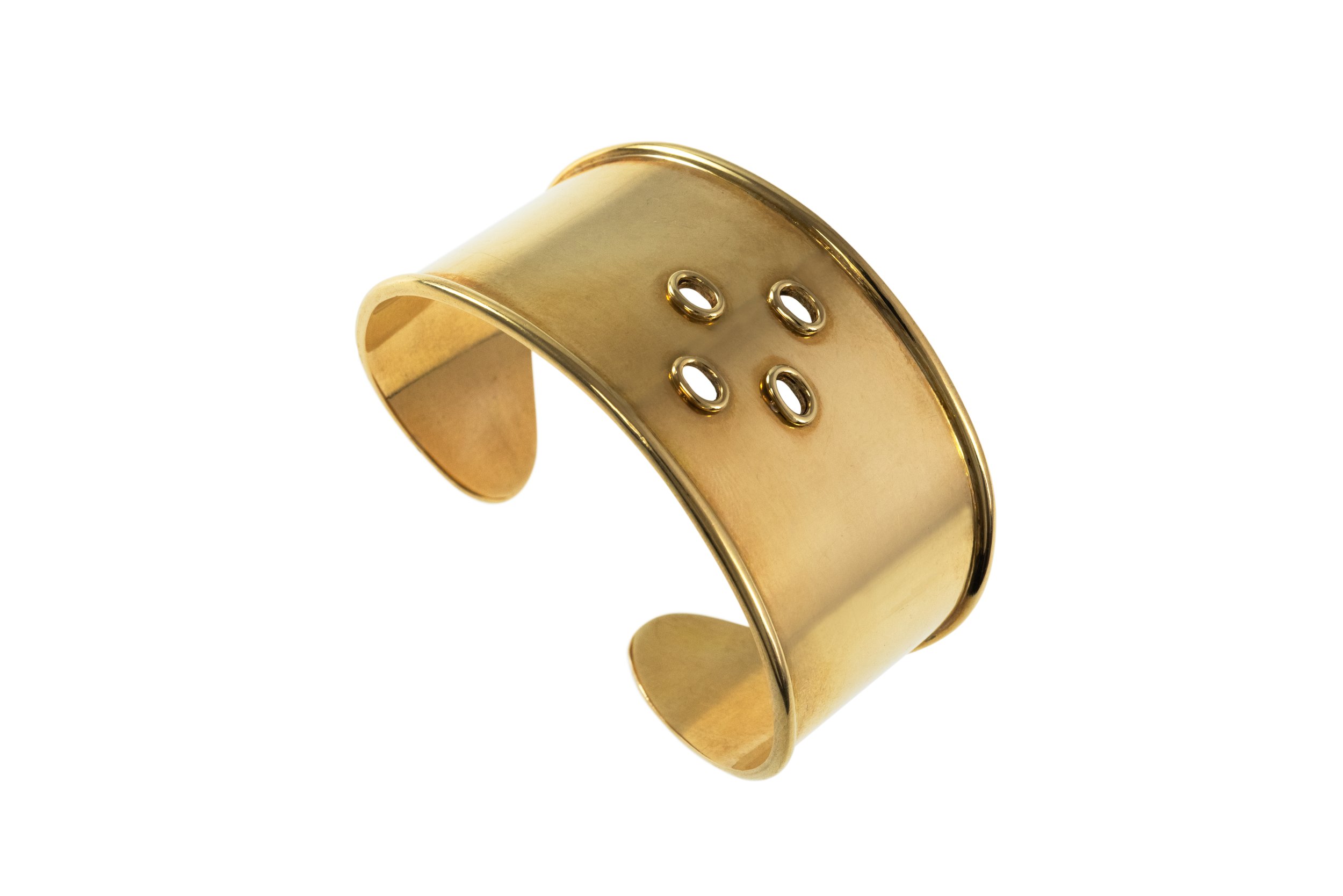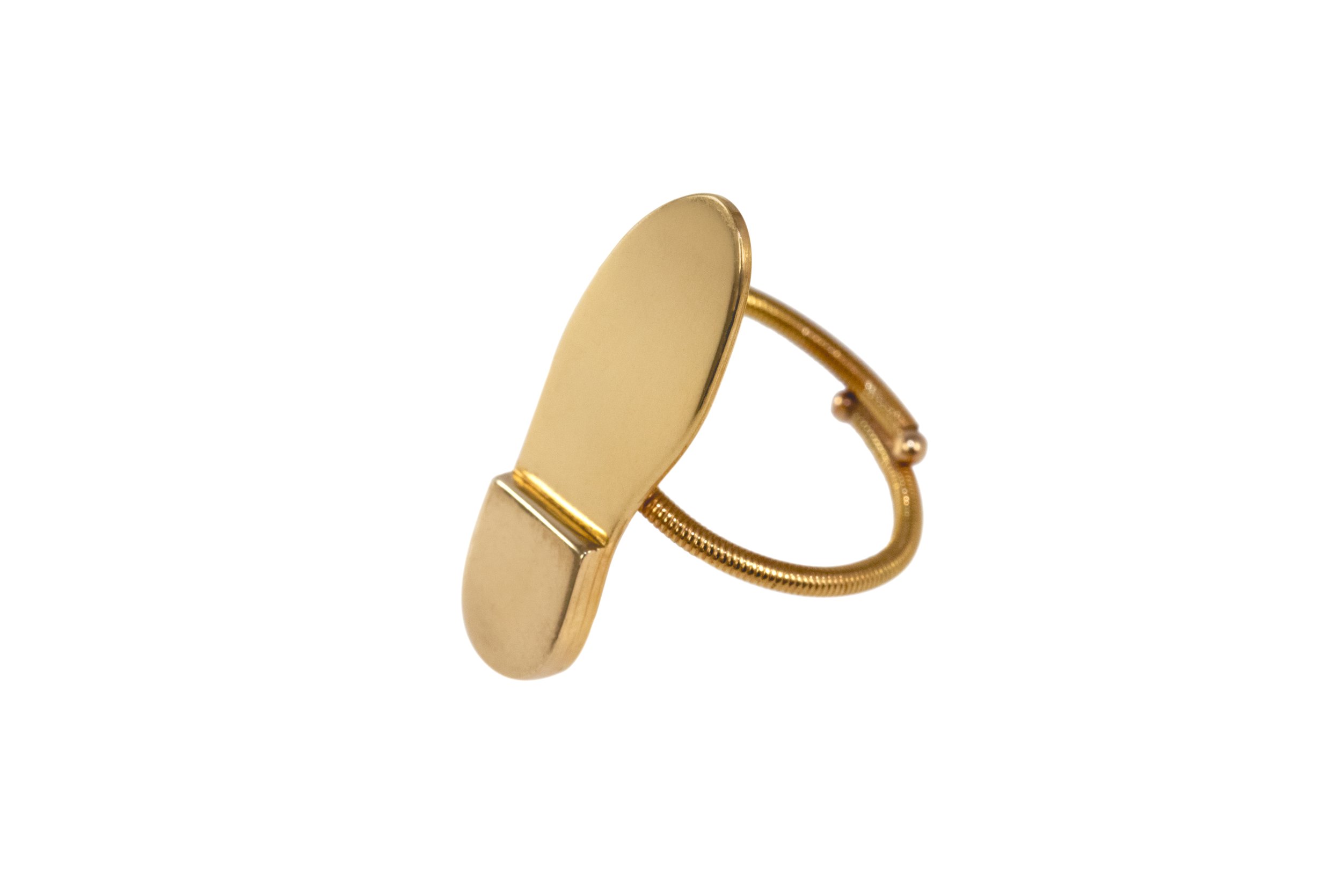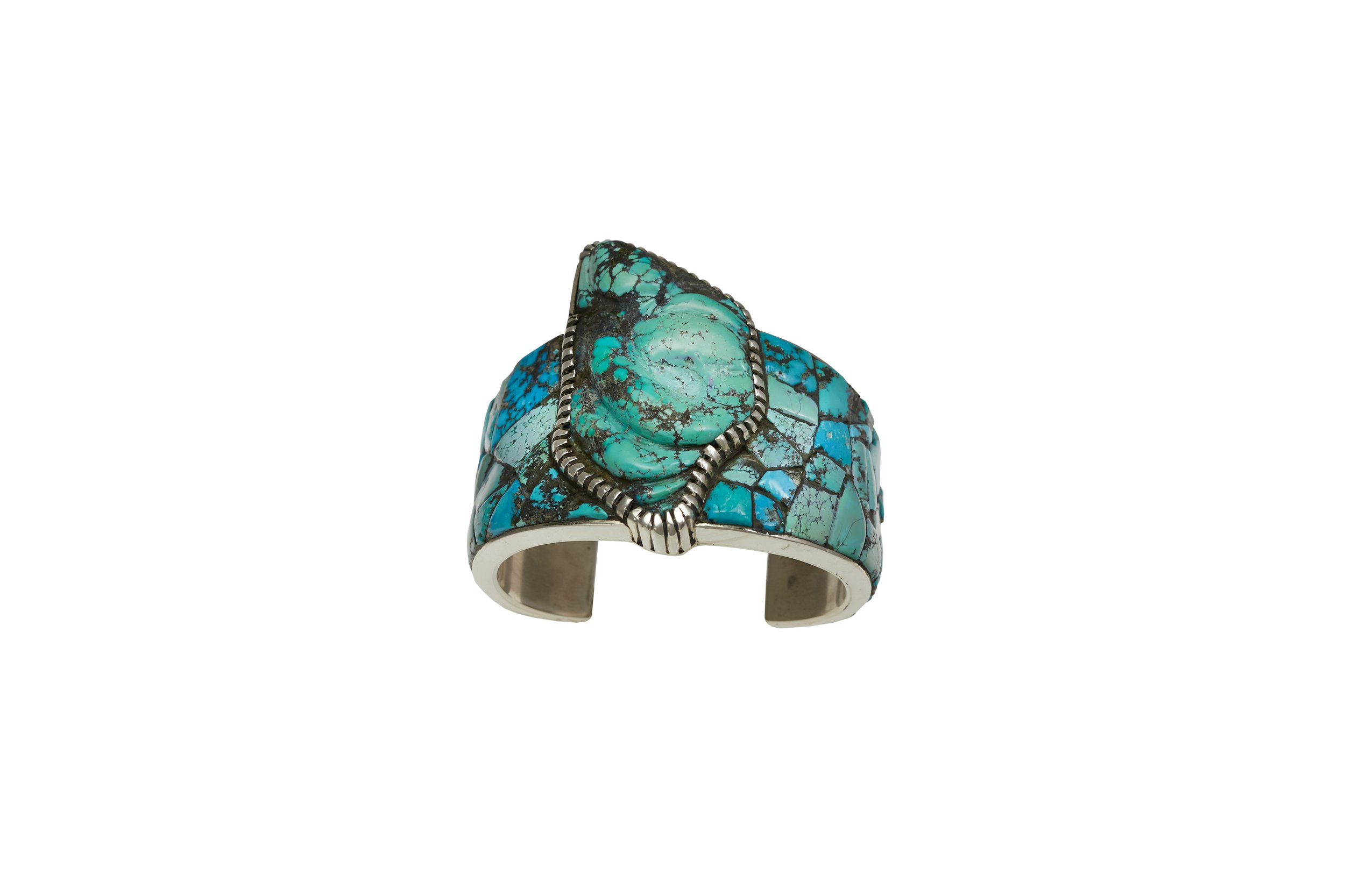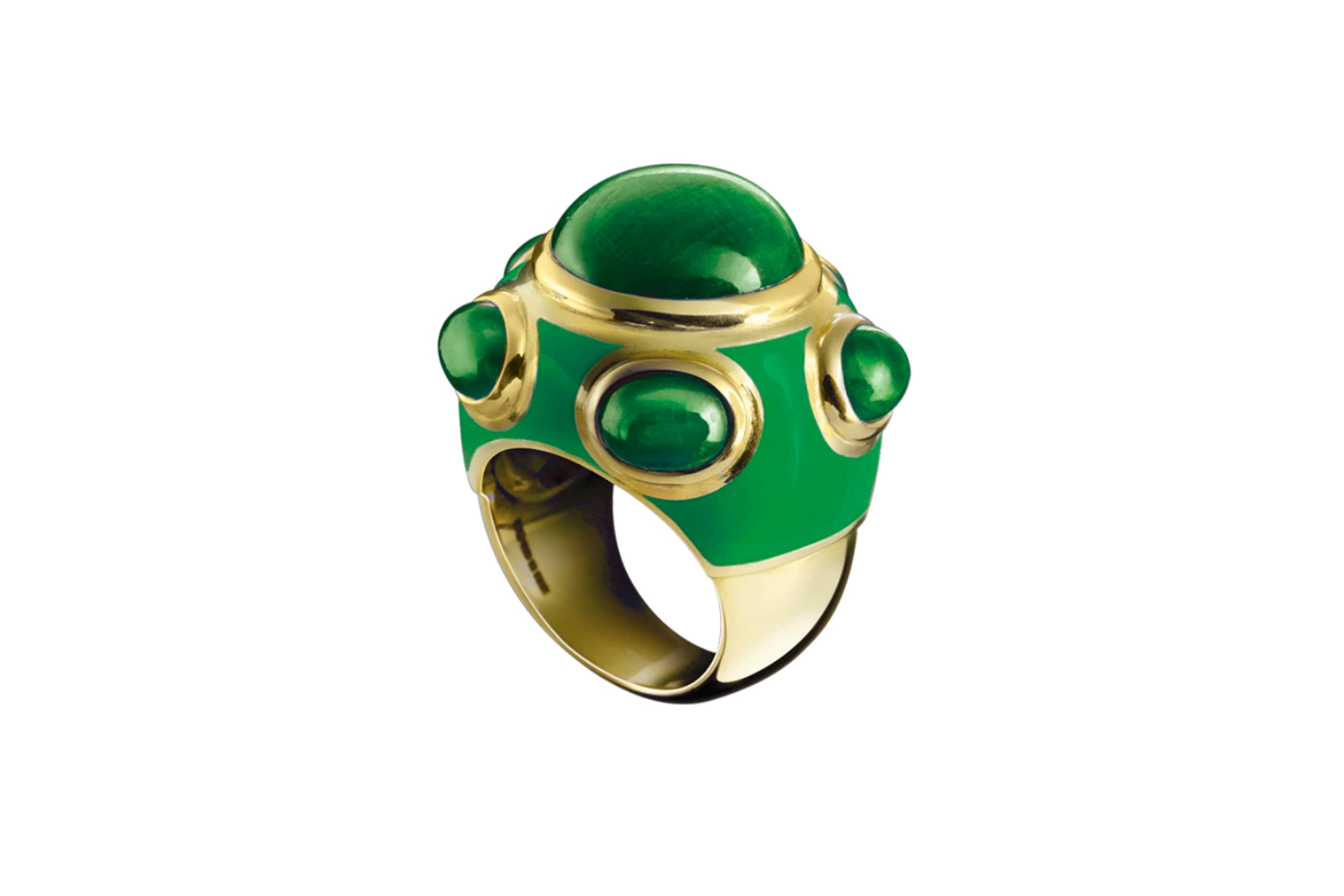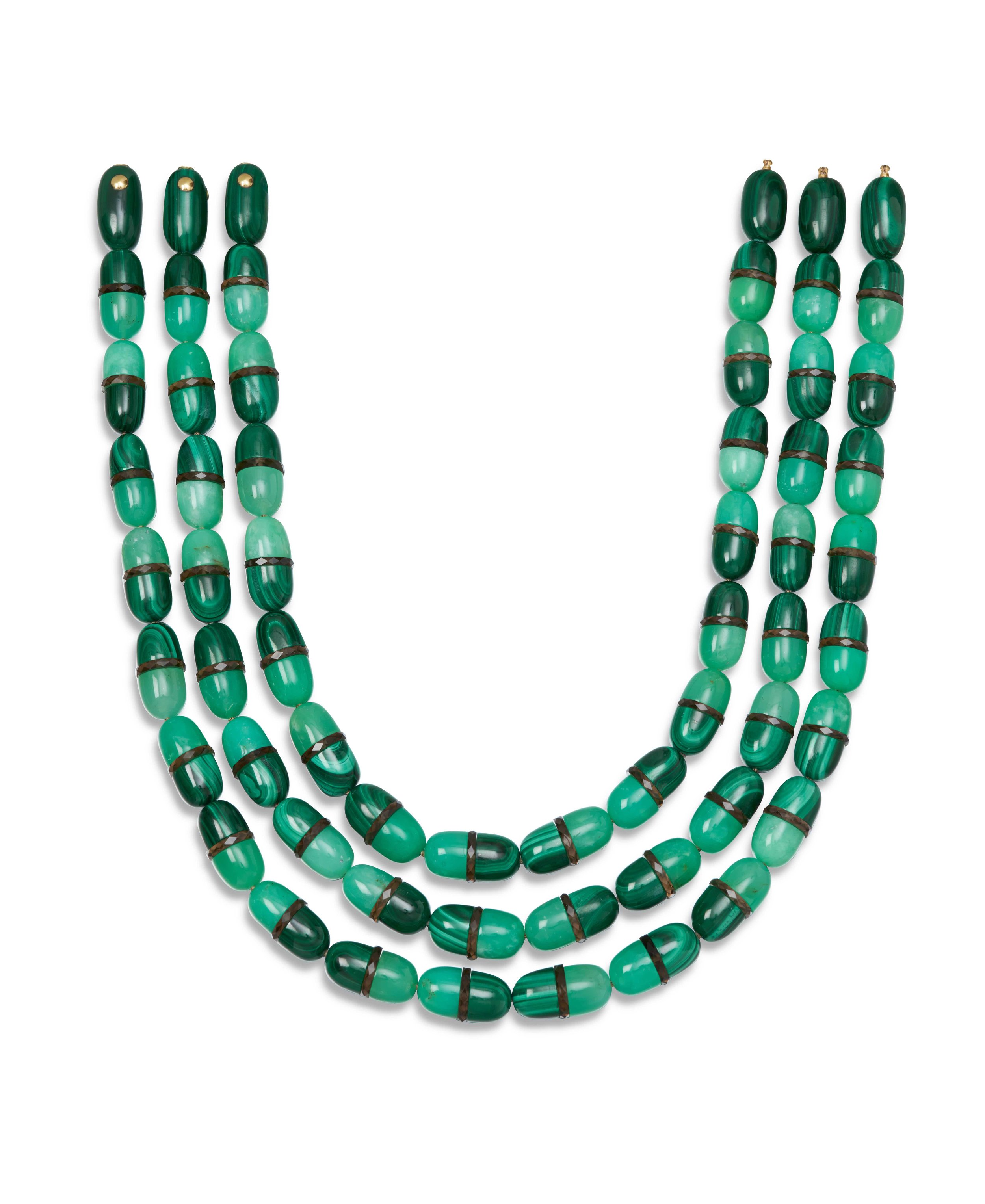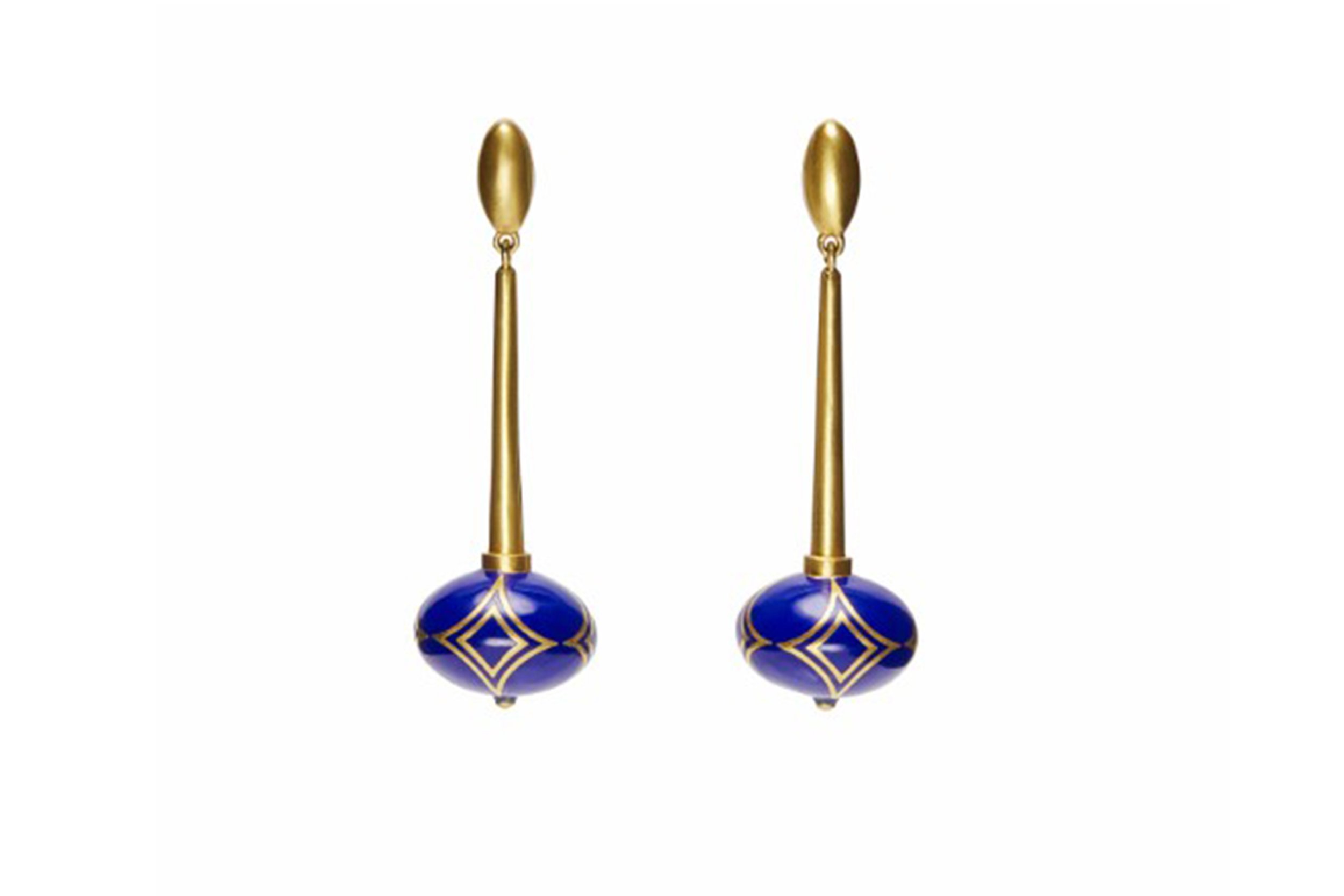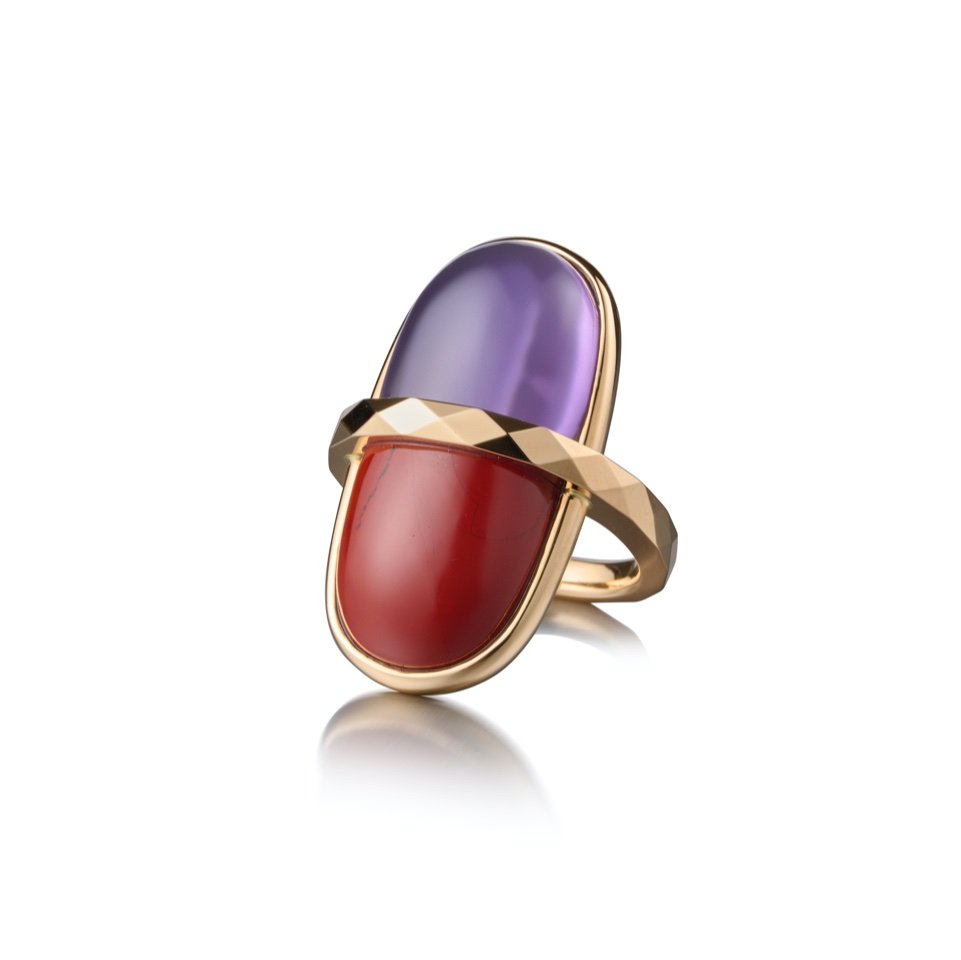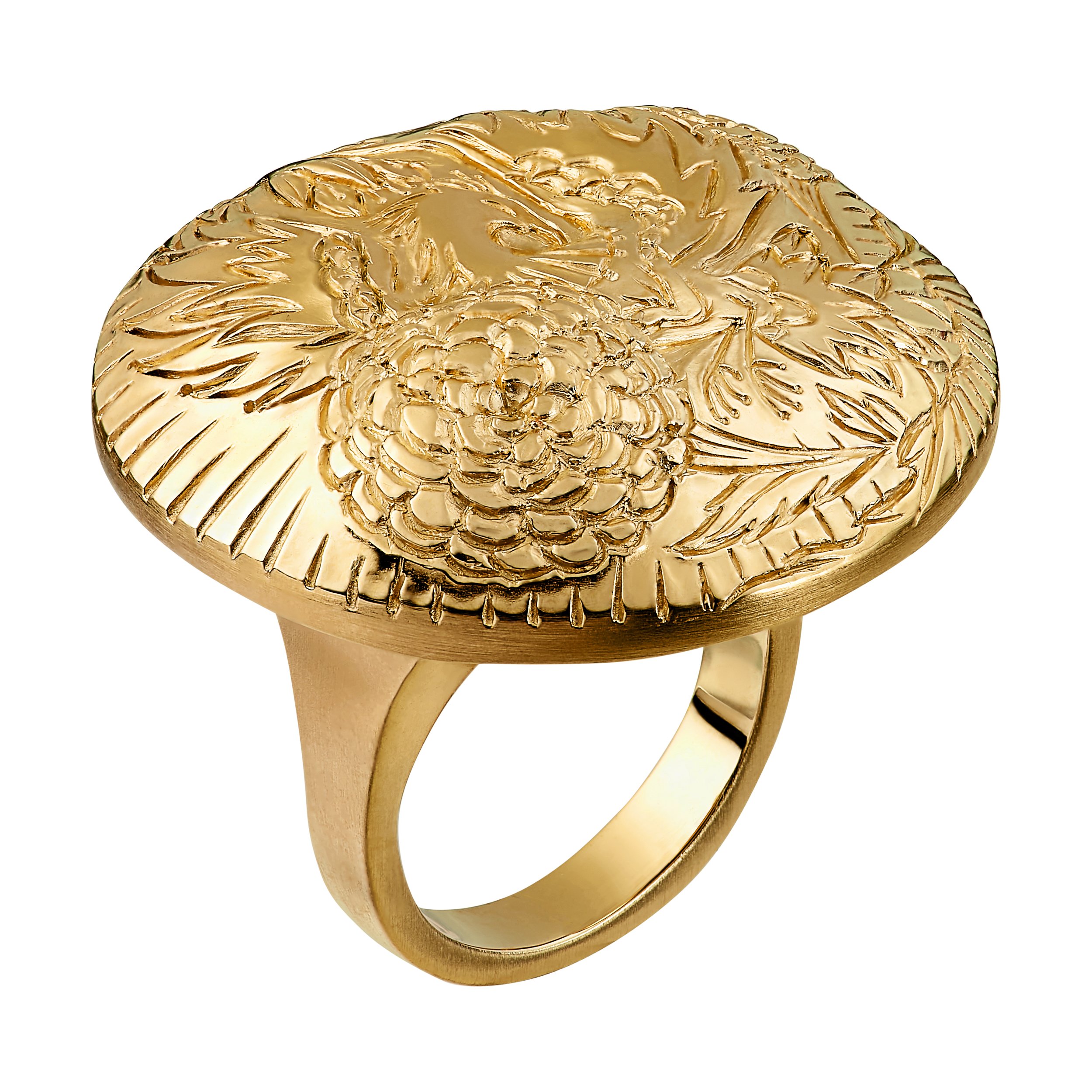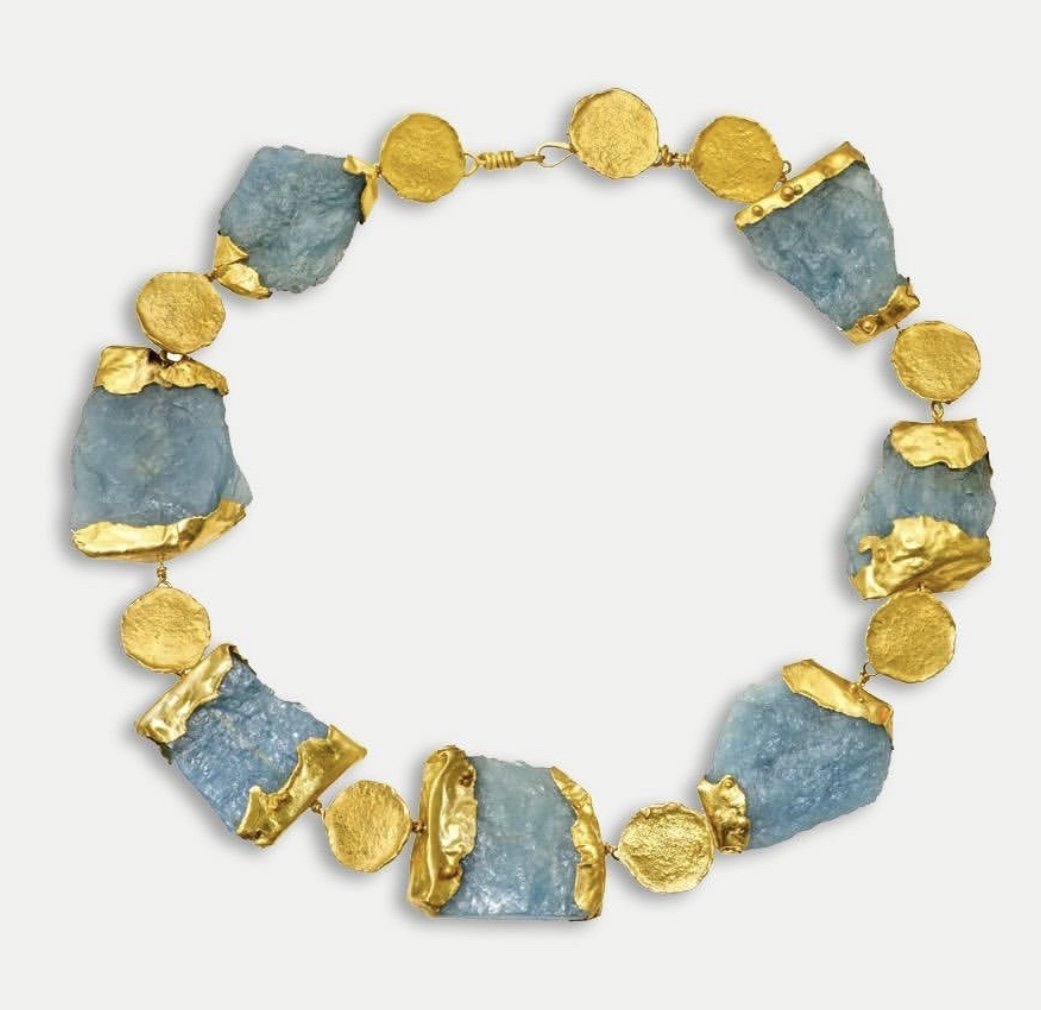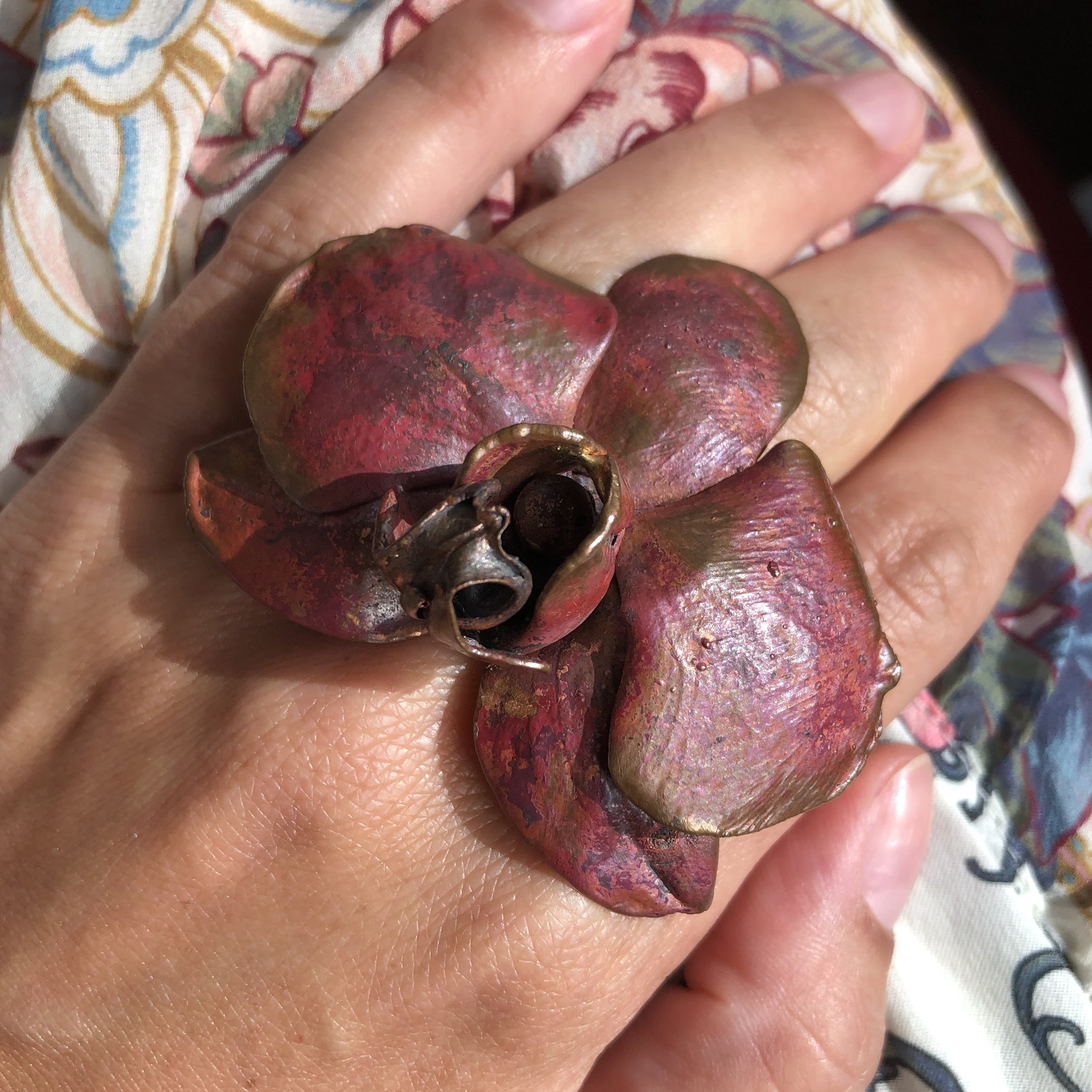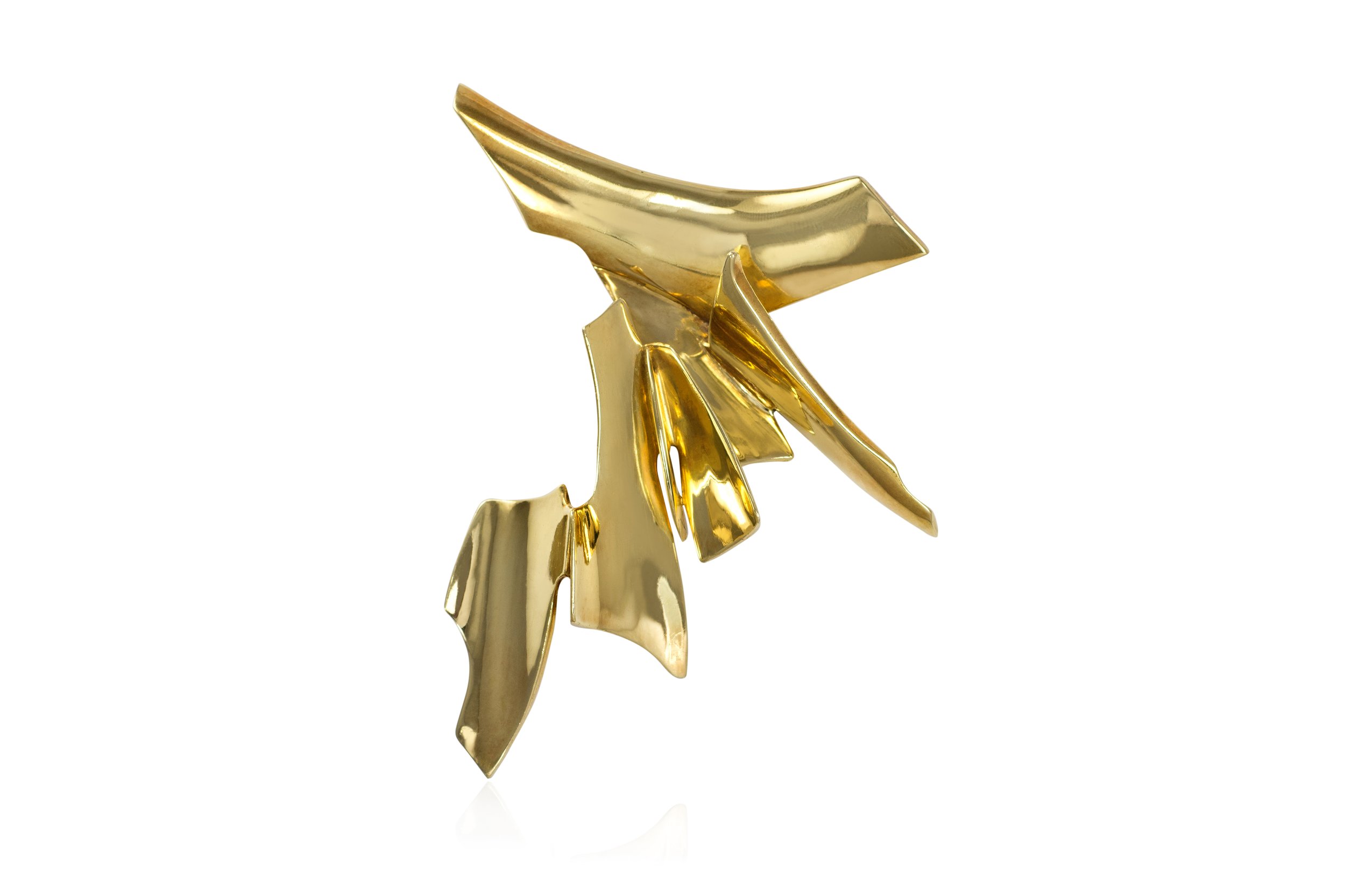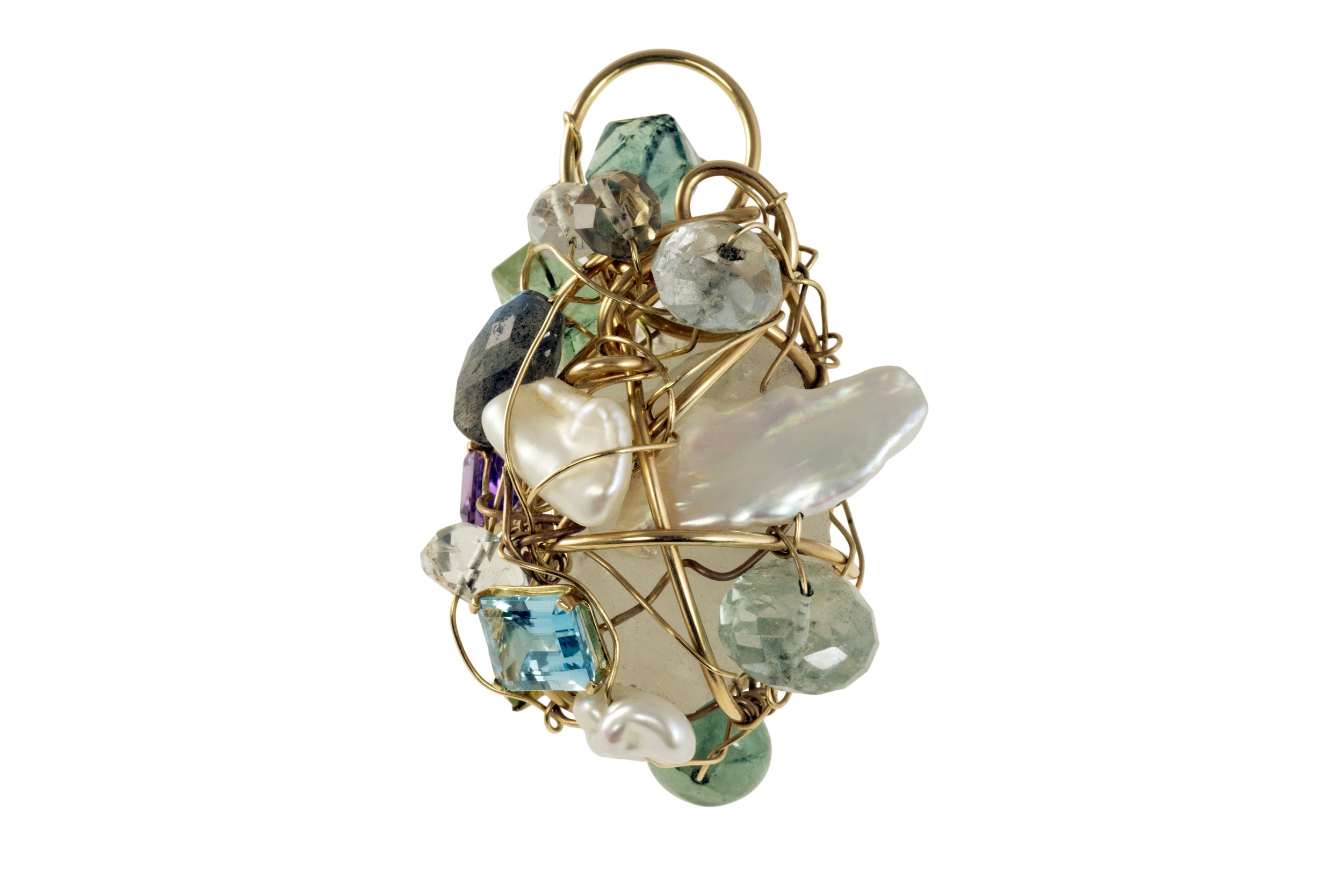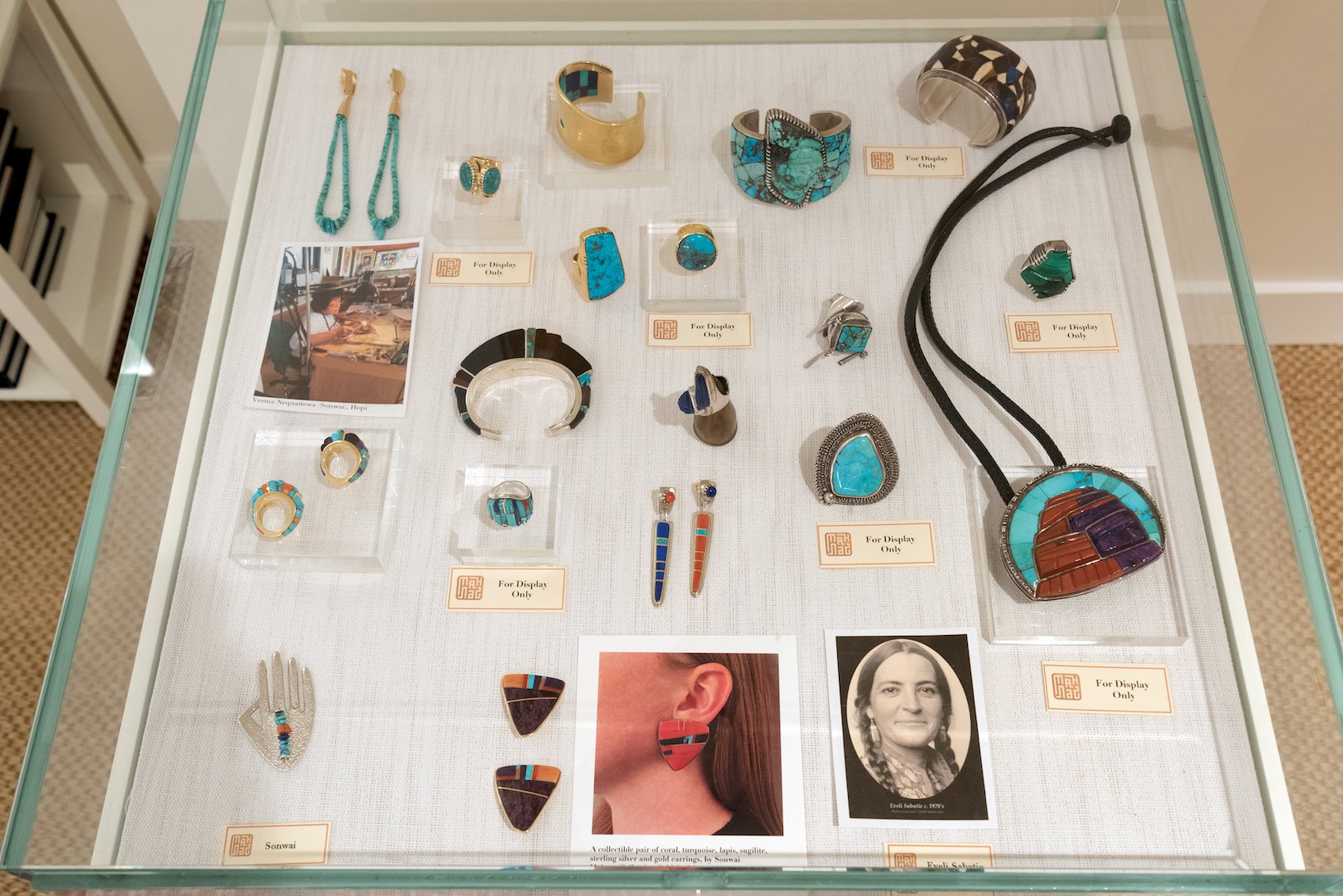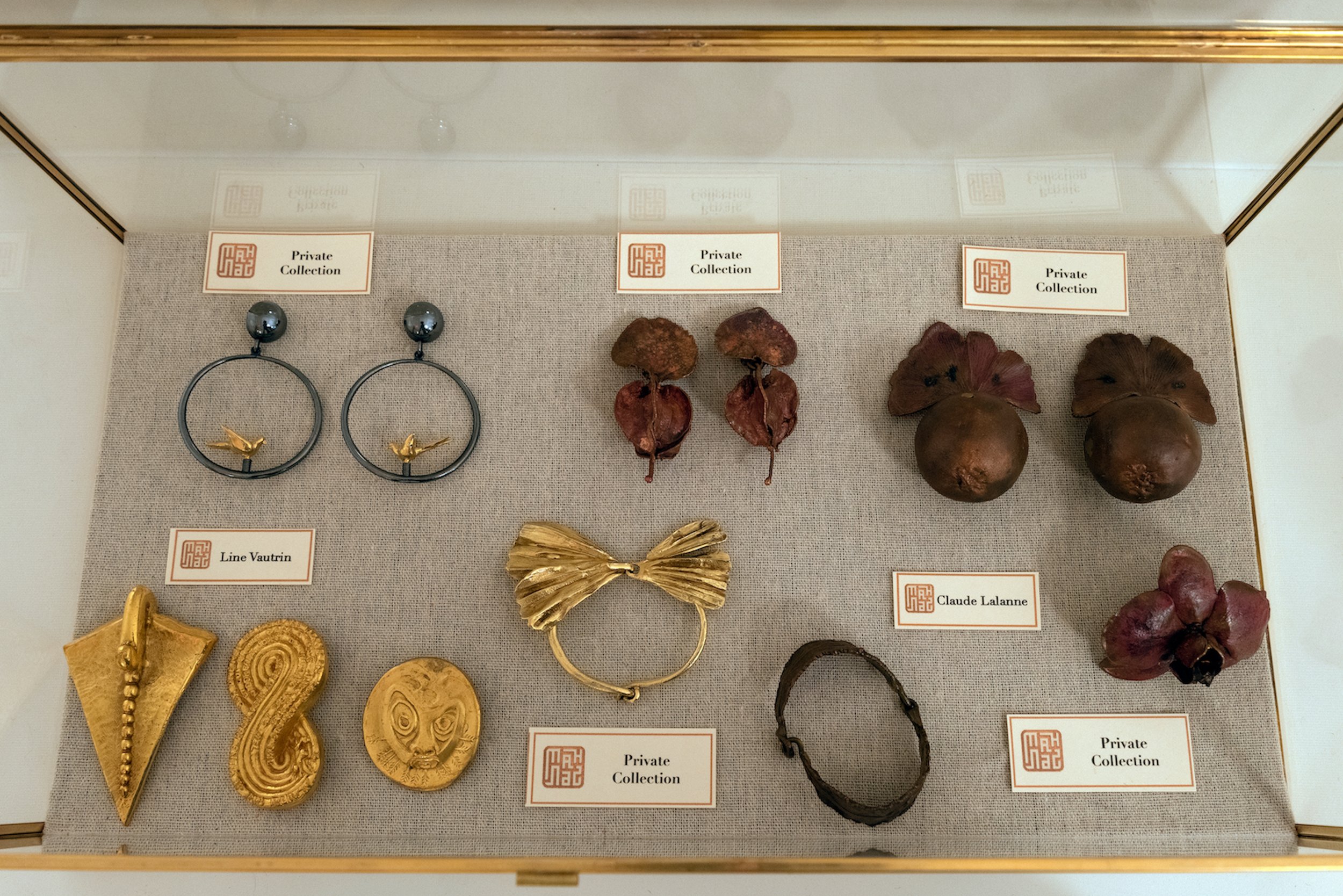Mahnaz Collection mounted its first exhibition of all-female jewelers, featuring over 250 works. Titled Women of Vision: 70 Years of Shaping the World of Jewelry, 1950 Onwards, the show and sale were designed to highlight the originality & craftsmanship of female jewelers from South and North America (including the American Southwest), Europe, the Nordic countries, Bermuda and Japan since about 1950. Viewing their work together readily reveals how women have – and continue to – unalterably shape jewelry history.
In this exhibition, curated by Mahnaz Ispahani Bartos, the jewelers, both past and present, are largely independent designers or those who, while employed by companies, speak with unique jewelry voices. In the late 1950s/early 1960s, new art, architecture, and design movements originated in Europe and America, drawing in the most creative jewelers in the then-somnambulistic and war-shy jewelry world, where it was men who made jewelry for women to wear. The jewelers represented here opened this art form to become a vehicle of self-expression for both the maker and the wearer.
The exhibition invited a dialogue between contemporary jewelry and modern vintage pieces made by over thirty of the most imaginative and forward-thinking jewelers of the second half of the twentieth century and the early 21st century. Some of these jewelers achieved international fame in their lifetimes and were later forgotten; others never received the kind of attention that they rightfully deserved. Exhibitions of this kind help restore the reputation of such lost “masters.” Of those still living, several have established reputations, while others would benefit from broader exposure, particularly in a historical context.
The modernist heritage jewelers in our show were or remain among the visionary leaders in all the design philosophies of their times – modernism, minimalism, organic design, surrealism, and feminism. Some had advanced degrees in the arts and goldsmithing. Others were entirely self-taught. Some started making jewelry because it was easier than doing something else, for example, working on chairs, while they took care of their sleeping children. That was the brilliant designer Nanna Ditzel's jewelry origin story. Others questioned accepted ideas of preciousness and value in jewelry making. Some drew on ancient cultures and created unreal worlds. Others tantalizingly explored the hard facts of geometry and new materials to the outermost edges when designing precious jewels. They took the unremarkable and made it witty and remarkable. They excelled across fields, from jewelry to silver, furniture, curatorial management, and writing.
Sometimes, it was a personal moment that turned a woman into a jeweler: Margaret de Patta, Vivianna Torun Bülow-Hübe and Solange Azagury- Partridge all started their careers after making a wedding band as their first piece of jewelry and having it much admired. Wendy Ramshaw did not design her wedding ring but instead questioned why a woman need wear merely one ring with a large stone? She decided to make multiple rings with smaller stones, and so was the stacking ring born in the early 1970s. Gerda Flöckinger may have been told that she needed to learn how to make traditional jewelry upon entering London's Central School of Arts and Crafts in 1952. Instead, she designed a course in experimental jewelry that became enormously important in the field. Her advanced and complex techniques and beautiful designs earned her a one-woman show at the Victoria & Albert Museum, London, in 1971, the first living female designer to achieve that honor. And when there needed to be a marketplace established for this kind of work, the jeweler Barbara Cartlidge opened Electrum Gallery in 1971, exhibiting the jewelry of Flöckinger, Ramshaw, and other pioneers, like Emmy van Leersum and Tone Vigeland. These were all women of vision.
Many of the jewelers were, and are, radical innovators, creating new forms and ways of wearing jewelry, aligning jewelry with sculpture, and developing new techniques – for example, fusion at a level that melted gold almost to the point of disintegration, but stopped just in time to create an exquisite, almost Baroque textured jewel. The enamellists crossed the spectrum of the ïsms”- there were southern American surrealists who made mysterious works and experimentalists in enameling and metalsmithing who sought to combine ancient arts with more modern sculptural forms. With international reputations for working on sculpture or painting at a large scale, female artists also explored the same aesthetic questions at a miniature scale, that of a jewel.
There were two standouts worth looking out for in the 250-plus jewel show: the first is the rarely seen “sewing circle” jewels of Surrealist artist, jeweler, and early collector, the fascinating and less-known Noma Copley, accompanied by images of her close friend, Man Ray's, photographs of Noma. The second is a very large pendant that belonged to La Dona, Maria Felix. Unlike her Cartier jewels, it is painted in enamel in a surreal, seemingly Mexican style and marked “WP” or "WAP". The enamel plaque is surrounded by gold, turquoise, and lapis beads. We have since found several other jewels made in silver by Erika Hult de Corrall, the modernist Mexican jeweler, which also bear the mark of the enamelist, whom, despite years of research, we are still not able to identify. The question: “Who was/is WP/WAP?”
In this exhibition, the gallery also brought together seven contemporary female designers – some already icons in the field and others in the process of making their mark. They included Solange Azagury -Partridge, Alice Cicolini, Melanie Eddy, Cora Sheibani, Tess Sholom, Van Gelder Jewellery, and Sophia Vari, the sculptor and artist.
Color is a dominant theme in the new work, as is yellow gold. Hardstones and refined enamel techniques make their presence known, as do the powers of geometry and abstraction, and the celestial world. Azagury -Partridge needs no introduction. She shows a range of jewelry, from a delicious emerald Pope ring to a Poptail ring, to some of her latest all-gold creations. Sheibani is a master of color, form, and wit and has a unique sensitivity to the beauty of hardstones and mastery over the art of their arrangements.
Several never before seen in the US jewels and collections debut exclusively at Mahnaz Collection.
Cicolini debuted her “Goddess” rings with their magical engravings and repoussé, hefty gold weight, and brilliant juxtaposition of forms – top and shank. These are available to order. Eddy has created new pieces for this show. Her polished geometric constructions reveal the hand of the maker and are sophisticated and pure. There is not an extraneous element to any piece. We also debuted Van Gelder Jewellery, the brainchild of Fleur and Noëlle van Gelder which defines exquisite jewels for a new generation by drawing upon their heritage of Indian jewels. And Sholom, in her eighth decade, now a trained jeweler, brings rich 22 karat gold works with luminous gems to this, her first fine jewelry show.
“Certainly women jewelers have made significant progress since the 1950s, yet ground remains to be covered. In 2022, we still need to mount a show on “women” jewelers, and we do so, recognizing that our gallery, woman-led and with an all-female team, has a special responsibility to undertake this task. Created by women for women, the exhibition shows jewelry through women's eyes and the extraordinary legacy – and future promise - of their style, individuality, and originality”– Mahnaz Ispahani Bartos.
With sincere thanks to Didier Ltd., Mark Macdonald, Robin Katz, Madeline Weinrib, Reema Keswani, and especially Gina Bartlett for loans to the exhibition.
Featured Contemporary Jewelers
British jeweler Solange Azagury- Patridge designed her first jewel in 1987 when she couldn’t find an engagement ring that she liked. This path has led many great female designers to join the pantheon of self-taught jewelers who have reshaped the industry and today Azagury-Patridge’s creations are in the permanent collections of the Victoria and Albert Museum in London as well as Les Arts Décoratifs at the Louvre Museum in Paris. In 2001 she was hired as the Creative Director at Boucheron but soon after launched her own highly successful brand. Whether it is Azagury-Patridge’s iconic HotLips or her bespoke pieces, all of the jewelry is crafted by the finest goldsmiths. Passionate about color, her exuberant and daring creations are meant to bring the wearer joy. During the pandemic, Azagury- Patridge became a household name when she was asked to host the popular BBC/HBO Max talent competition “All that Glitters.”
I came to know about Angela Cumming’s work for Tiffany some years after I launched my first collection. Her body of work for the brand represents a daring and confidence from both the company and the customer that I have been in huge admiration of ever since. Her 1978 Laser Lines Wide Cuff is right at the very top of my jewelry wish list, along with a stack that would include her hematite and gold stripe bangle, damascene cuff and any one of her wide stone and gold bracelets. A master of elegance and simple chic that is extreme hard to do.
- Alice Cicolini
British jeweler Alice Cicolini is renowned as much for her masterful enameled creations as she is for her storytelling. These two elements combined is what makes Cicolini’s jewelry unparalleled. Cicolini famously collaborates on her creations with Kamal Kumar Meenakar, one of the last Jaipuri meenakari (also known as champlevé enamel) trained in the enamel traditions of Persia which go back hundreds of years. Inspired by the sacred architecture and patterns of the Silk Route, Cicolini aims to keep the meenakari traditions alive through her work. Her role as the former Director Arts & Culture for the British Council in India, has allowed her to maintain a close relationship with Indian craft and design. In addition to the enameling, Cicolini also uses the finest hand-carvers in Jaipur for her ebony creations as well as local London goldsmiths working with Fairtrade gold for some of her more modern pieces. A highly regarded author, curator, and arts administrator, her work has also been featured in seminal publications such as Masters of Modern Jewellery (Joanna Hardy), Drawing Jewels for Fashion (Carol Woolton), The New Jewellers (Olivier Dupon), Coveted (Melanie Grant), and Bejewelled: The World of Ethical Jewelry (Kyle Roderick).
Greek artist Sophia Vari has achieved international acclaim as a sculpture and jeweler. Regarded as an important artist-jewelers of the 20th and 21st century, she applies the same principles to her voluminous and sumptuous jewels as she does to her monumental sculptures and works on paper. Driven by form, her jewels, which are made in a variety of materials including wood, precious metals, and semi-precious stones, invite the human touch and spark in us the desire to connect. Her work is part of over 20 major public collections and throughout her long and illustrious career, which began in the early 1960s, she has had approximately 100 solo-exhibitions around the world. Vari was educated at the Ecole des Baux-Arts in Paris in 1958.
Wendy Ramshaw’s work astonished and delighted me when I first saw it. Her bold and innovative vision was an inspiration to me.
- Tess Sholom
New York-based jeweler Tess Sholom began her prolific career in 1976 producing jewelry for the runways of top fashions designers like Karl Lagerfeld, Oscar de la Renta, and James Galanos. Examples of jewelry from this time period can be found in Metropolitan Museum of Art, the Smithsonian Institution, Museum of the City of New York, the Racine Museum of Art, the Museum of Fine Arts in Houston, and the Fashion Institute of Technology, amongst others. A leader in the field she also founded the professional organization FADA, the Fashion Accessories Designers Association in 1980. In more recent years, Sholom has turned her attention to producing jewelry in high-karat gold coupled with precious and semi-precious stones. Bringing to them the same joie de vivre and charisma as to her fashion jewelry, her newest creations are artful and bold, some inspired by her Greek heritage, and others by her love of travel and ancient cultures.
As Mme Suzanne Belperron would say “my style is my signature”. With our contemporary designs, we aim to create our own vision- signature style- drawing inspiration from traditional Indian culture, amalgamated with out (western) perspective into timeless, beautifully crafted fine jewellery. A celebration of the backstory of the design.
- Noelle Viguurs-van Gelder
Based in s’-Hertogenbosch, The Netherlands, Van Gelder Jewellery has been a family business since 1980 and today is overseen by the second generation of jewelry guardians, Fleur Damman – van Gelder and Noelle Viguurs – van Gelder. The company is synonymous with traditional heritage jewelry from India and has cultivated an international following of collectors and connoisseurs. India has proved to be a powerful and limitless source of inspiration for Fleur and Noelle. From its architectural landmarks to its influential female leaders, the sisters channel their creativity to produce contemporary designs using 18k gold, an array of precious stones, and traditional goldsmithing techniques to create interesting and strong jewels, just like the women that they are meant to adorn. Van Gelder Jewellery has solidified its global reputation by taking part in many international art fairs, including TEFAF Maastricht, from 1985-2018, and also by the two volume publication of Traditional Indian Jewellery – The Golden Smile of India & Beautiful People, authored by Mrs Bernadette van Gelder, the mother of Fleur and Noelle, and the original founder of the company.
Elsa’s pieces were the kind of jewellery I craved but I didn’t always find in my little island home of Bermuda. Probably a big part of why I decided to start making my own jewellery. Her pieces were significant but not overly complicated and encrusted with gems. Bold, strong, confident, and unapologetic but not try hard. They were for women taking space and forging paths in all kinds of arenas, this was jewellery for trailblazers. It was strong but also somehow soft- feminine but not fussy and above all it just seemed effortless. That was her genius.
- Melanie Eddy
London-based jeweler Melanie Eddy is one of the most exciting names in jewelry today. Trained in Bermuda, Canada, New York and London; she holds an MA Design: Jewellery from Central Saint Martins College of Art and Design. Eddy specializes in bespoke sculptural jewels made from precious metals, each piece is crafted by hand in her studio/workshop is based in the Goldsmiths’ Centre in Clerkenwell, London - a visionary new development for the jewelry and silversmithing industries, their allied trades, the local community and the general public. Not new to the industry, she has held numerous academic positions, most notable at the Central Saint Martins College of Art and Design and worked with The Worshipful Company of Goldsmiths’ since 2007. Eddy was one of the 21 jewelers featured in the groundbreaking exhibition Brilliant & Black: A Jewelry Renaissance at Sotheby’s NY (September 2021), and more recently in Force of Nature, at the Elisabetta Cipriani Gallery in London (November 2021). Eddy’s work is featured in many private and public collections, including the Victoria and Albert Museum, London.
Swiss-born, London-based jeweler Cora Sheibani fuses beauty, whimsy, and nature to create her brilliant one-of-a kind jeweled creations. A graduate of New York University’s Art History program and a certified GIA gemologist, Cora brings knowledge and expertise to her masterfully crafted jewels. Her collection of copper molds is legendary and has served as inspiration not only for her cake-like jewels but have also been the subject of a bejeweled cookbook published in 2009. Sheibani’s work has been extensively exhibited throughout Europe and the United States.
SELECTED PRESS
CELEBRATE 70 YEARS OF VISIONARY FEMALE JEWELRY DESIGNERS
BY AMY ELLIOTT, 1STDIBS
‘WOMEN OF VISION’ EXHIBIT TO HIGHLIGHT 70 YEARS OF FEMALE JEWELRY DESIGN
BY KAREN DYBIS, JCK
‘WOMEN OF VISION’ AT MAHNAZ BEGS A QUESTION
BY M.J ROSE, THE ADVENTURINE

